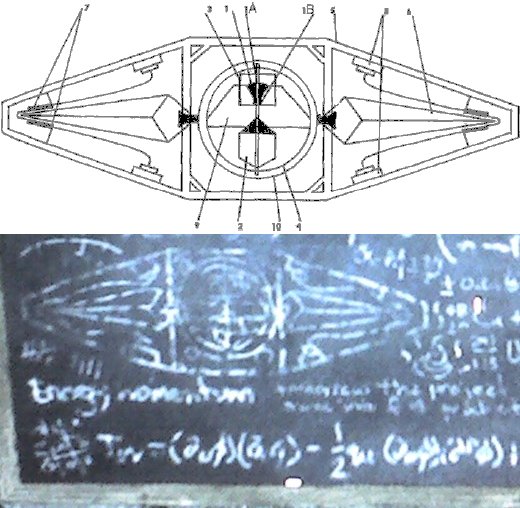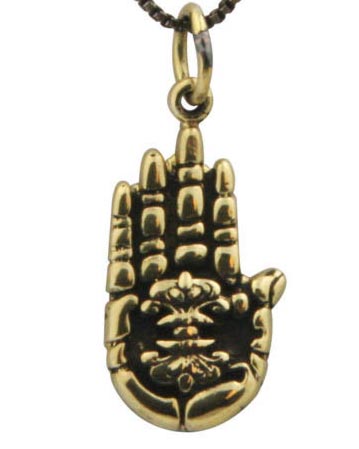It looks like you're using an Ad Blocker.
Please white-list or disable AboveTopSecret.com in your ad-blocking tool.
Thank you.
Some features of ATS will be disabled while you continue to use an ad-blocker.
share:
Originally posted by draknoir2
Originally posted by Kantzveldt
reply to post by TheDoctor46
Perhaps other places to go, other things to do. There may be some indication though of where it was from, or seen as related, this is a Mudra trinket bearing a Dorje within the hand motif;
Yes, perhaps to the common people who passed down the stories of what they saw, this is what the weapon "looked like", so this is what they painted and carved... Did they really see the mirror image, though? Or was that added on later as a design decision to make jewelry or whatever carvings and it just stuck? Maybe there are still examples of the single mushroom cloud before it evolved. Or maybe it reflected off water?
And perhaps the drone was the delivery system which could also return with intelligence or drop a number of weapons?
Or maybe its not nuclear at all... Maybe it is a handheld device that connects to your brain through Bluetooth and let's you control the drone and see through its cameras and fire at will. When it says "it cannot be used frivolously", is this because it drains your energy while you're using it? You gotta take care of business and bring it home.
Perhaps the aliens or gods or whatever left some humans or bloodline relatives in charge of the planet and taught them everything they needed to know and left them with some hi tech toys to help them maintain control over the planet and its people.
Skip forward 5,000 years... Many of the toys have been lost, or purposely destroyed or hidden. But the bloodlines still maintain control over us after all these years, waiting patiently for their superiors to return with more toys and reinstate the total god worship control system that was in place 5,000 years ago. After they collect 6.5 BILLION slaves to ship off planet where they are needed, of course. Then Human Farm 2287 can be restarted.
It doesn't matter if the half a million people used to seed the farm know the truth... No matter how hard they try to warn us, the message will get lost after enough generations and they will forget to pass down the important stuff. The elite overlords will do their best to derail them off track with wars and such, dwindling us down to 100,000 or less if necessary. When we have suffered all of the Gods plagues and can only think of survival, then survival skills will be all we can afford to pass down and remember. Little bits of the original pedestrian might get through, and us modern humans might begin to grasp the first couple of clues, but by then it will be too late and our fate will be sealed.
reply to post by Kantzveldt
Thank you for that. I had to go look it up to find out about it.
So then I googled "bitumen"...
So... I wanted to ask you about these other devices that look like darts. If you know exactly where they were found and how long they are in your two pics? Thanks in advance.
Thank you for that. I had to go look it up to find out about it.
"I built their structures with bitumen and (baked brick throughout). I completed them, making (them gleam) bright as the (sun)..." (Translations by Professor Andrew George)
www.msnbc.msn.com...
So then I googled "bitumen"...
In the ancient Middle East, the Sumerians used natural asphalt/bitumen deposits for mortar between bricks and stones, to cement parts of carvings, such as eyes, into place, for ship caulking, and for waterproofing.[1] In some versions of the Book of Genesis in the Bible, the name of the substance used to bind the bricks of the Tower of Babel is translated as bitumen (see Gen 11:3). A one-kilometre tunnel beneath the river Euphrates at Babylon in the time of Queen Semiramis (ca. 800 B.C.) was reportedly constructed of burnt bricks covered with asphalt/bitumen as a waterproofing agent.
ancient sealent
So... I wanted to ask you about these other devices that look like darts. If you know exactly where they were found and how long they are in your two pics? Thanks in advance.
edit on 13-1-2013 by intrptr because: emphasis added
reply to post by Kantzveldt
Sorry, I meant the Vjara. The thunderbolt, diamond. I read your Op again. Thanks again for bringing this. At first glance I was confused about the origins of this (ancient everywhere it seems), it's meaning and purpose.
As a ritual object it means many things to ancient cultures the world over. But the object itself seems to have no explanation for its form as crafted or put on art, coins, etc.
It "means" something, and yet has no description of why it takes the shape it does. I don't see any resemblance to anything in nature except maybe certain plankton in the ocean or exploding stars in the heavens. Both of which the ancients didn't have the technology to see.
So what is it supposed to represent?
Religions suggest various spiritual significances or achievements all of which I agree with to some extent, just not how the physical object (Vjara) relates to that. We have lost the meaning for it, I think. That made me jump to the modern weapons foretelling thing. Sorry about that. I have no way of knowing that is what they intended.
Sorry, I meant the Vjara. The thunderbolt, diamond. I read your Op again. Thanks again for bringing this. At first glance I was confused about the origins of this (ancient everywhere it seems), it's meaning and purpose.
As a ritual object it means many things to ancient cultures the world over. But the object itself seems to have no explanation for its form as crafted or put on art, coins, etc.
It "means" something, and yet has no description of why it takes the shape it does. I don't see any resemblance to anything in nature except maybe certain plankton in the ocean or exploding stars in the heavens. Both of which the ancients didn't have the technology to see.
So what is it supposed to represent?
Religions suggest various spiritual significances or achievements all of which I agree with to some extent, just not how the physical object (Vjara) relates to that. We have lost the meaning for it, I think. That made me jump to the modern weapons foretelling thing. Sorry about that. I have no way of knowing that is what they intended.
It maybe looks more like one of these, perhaps not surprisingly...as they copied.


reply to post by Kantzveldt
I see... Nazi UFO's. The caption in the PDF reads:
I was thinking about about the "looks like" aspect of your photo of the tower and object in the foreground.
Maybe its a picture of the moment of "splitting an atom". Maybe that thing it rests upon and the tower behind it are a facsimile or representation of...
The device:
and the tower:
I see... Nazi UFO's. The caption in the PDF reads:
Above: Internal plans for a "Vril-1" saucer, according to Polish historian Igor Witkowski.
I was thinking about about the "looks like" aspect of your photo of the tower and object in the foreground.
Maybe its a picture of the moment of "splitting an atom". Maybe that thing it rests upon and the tower behind it are a facsimile or representation of...
The device:
and the tower:
reply to post by intrptr
Yes i was having a look at the two Vril pamphlets from 1930 to try to figure to what extent they were directly influenced by the Dorje model and how to construct a working model of the Vril staff of the novel 'Vril, the Coming race'...
weltdynamismus
Vril der kosmische urkraft
Yes i was having a look at the two Vril pamphlets from 1930 to try to figure to what extent they were directly influenced by the Dorje model and how to construct a working model of the Vril staff of the novel 'Vril, the Coming race'...
weltdynamismus
Vril der kosmische urkraft
new topics
-
Potter to WHU
World Sports: 2 hours ago -
Dr. Demento
Music: 4 hours ago -
The elephant in the room (wearing a hoodie)
US Political Madness: 4 hours ago -
To become president, Zelensky had to learn Ukrainian
Political Conspiracies: 10 hours ago
top topics
-
The elephant in the room (wearing a hoodie)
US Political Madness: 4 hours ago, 7 flags -
Green Grapes
General Chit Chat: 14 hours ago, 6 flags -
To become president, Zelensky had to learn Ukrainian
Political Conspiracies: 10 hours ago, 6 flags -
Dr. Demento
Music: 4 hours ago, 2 flags -
Potter to WHU
World Sports: 2 hours ago, 1 flags
active topics
-
Los Angeles brush fires latest: 2 blazes threaten structures, prompt evacuations
Mainstream News • 132 • : alldaylong -
Russia Ukraine Update Thread - part 3
World War Three • 6907 • : ufoorbhunter -
Dr. Demento
Music • 7 • : AlroyFarms -
Mood Music Part VI
Music • 3780 • : underpass61 -
Post A Funny (T&C Friendly) Pic Part IV: The LOL awakens!
General Chit Chat • 8006 • : underpass61 -
To become president, Zelensky had to learn Ukrainian
Political Conspiracies • 16 • : DontTreadOnMe -
The elephant in the room (wearing a hoodie)
US Political Madness • 11 • : Xtrozero -
Planned Civil War In Britain May Be Triggered Soon
Social Issues and Civil Unrest • 28 • : BedevereTheWise -
My personal experiences and understanding of orbs
Aliens and UFOs • 40 • : ufoorbhunter -
Trump says ownership of Greenland 'is an absolute necessity'
Other Current Events • 67 • : xuenchen


